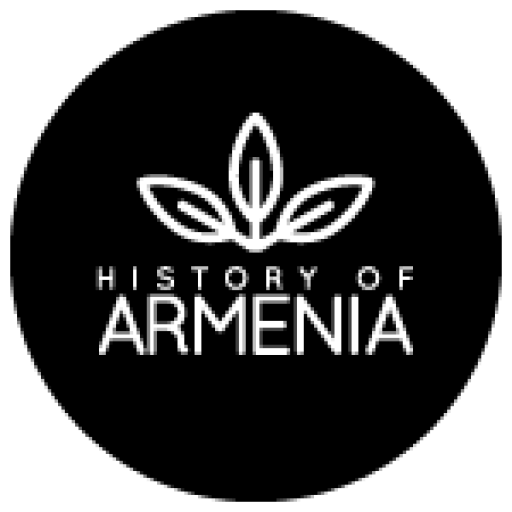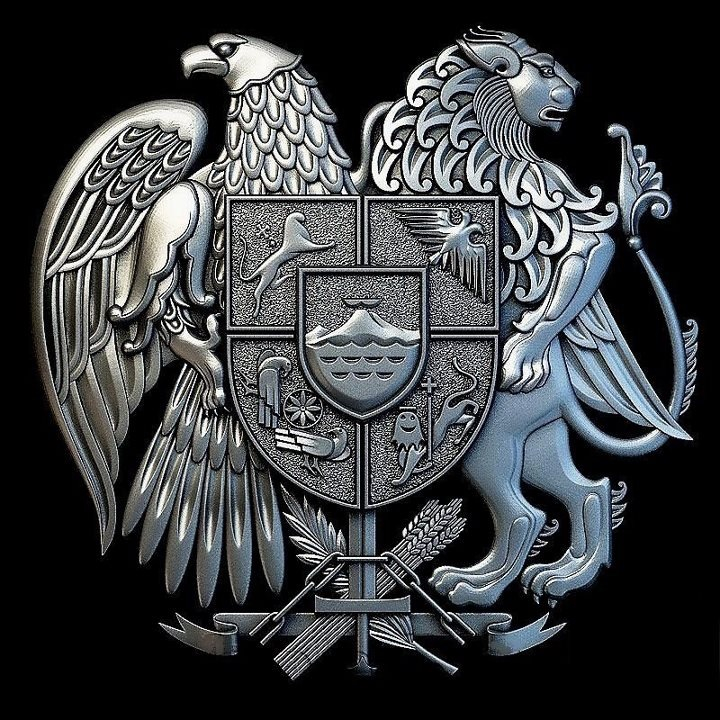The importance of the nobility in Armenia before the loss of its independence cannot be overestimated, but the history of this nobility was characterized by a steady decline in the number of families of which it was composed. From about fifty in the fourth century A.D., the number of Armenian princely houses steadily dwindled to some forty-two in the fifth century, to thirty-five in the sixth, and to twenty in the eighth.
Ultimately, only seven Armenian noble families are known for certain to have survived the fall of the last Armenian monarchy in 1375. Of these, five continued to exist in Georgia while three others, the House of Artsruni, the House of Siwni, and the House of Orbelian, survived on Armenian soil, the first until the Turkish occupation of Van; the remaining two under Persian and, later Russian rule. For all this, however, there are many Armenian families of the Ottoman Empire who claim descent from the princely houses of the Armenia of old, and some of these families have played a clear and visible role in modern Armenian history.
The basic problem in dealing with their claims lies in proving their legitimacy on grounds other than those of the family’s own traditions, how valid they may possibly be, by their very nature cannot always be verified. In the egalitarian world of Islam, and especially in the Ottoman Empire (which, unlike Russia, recognized no hereditary nobility beyond the imperial house itself), the lack of official recognition of nobiliary descent leaves us with very little support for nobiliary claims. Anyone in such a social environment is free to claim descent from anyone he or she pleases.
This article, attempts to give an overview of the claims to princely descent of five Ottoman Armenian families, each of which based its pretensions on different grounds.
The Dadians Of Constantinople
Claim: Artsruni Dynasty
Date of origin: 69 B.C.
Parent House: Orontid dynasty
Date of origin: 570 B.C.
The Dadians of Constantinople, a house that from the end of the eighteenth century held the important position of “barutcubasi”, or chief powder-makers, for the Ottoman army. Highly placed, powerful, influential, and very, very rich, the Dadians were among the foremost members of the amira class (moneyed aristocracy) which dominated the Armenian community of Constantinople (and hence the entire Armenian millet within the Ottoman Empire), until the reforms that took pace in the middle of the last century.
The evidence of the claim of the Dadians to have been of royal Artsrunid descent consists of a single document, Armenian MS 239 of the Bibliotheque Nationale, which, while remaining unpublished, has been fully described by Frederic Macler. Containing the history of the Dadian family and of two of its branches, the Zedayans and the Berozians, this document was written by Seraphim Berozian in November, 1858, and includes a short introduction by the Catholicos Matt’eos Izmirlian (1858-1865) guaranteeing the authenticity of the genealogy it contains.
The Dedeyans Of T’omarza
Claim: Artsruni Dynasty
Date of origin: 69 B.C.
Parent House: Orontid dynasty
Date of origin: 570 B.C.
The Dedeyans of T’omarza claim to be both of Artsruni and Bagratid origin. According to C. Dedeyan, the Dedeyan family was descended from princes of T’omarza who had been the “chiefs of emigration” at the time when the Armenians fleeing the Seljuk Turkish invasion had settled within the Byzantine Empire in various parts of Cappadocia. He quotes Aghassi, the historian of Zeitun, to the effect that the chiefs of emigration of this period were “princes of royal families” (i.e. apparently of Artsrunid and Bagratid origin, the only Armenian royal families that settled in Cappadocia)
Quoting Alpoyajian, Dedeyan lists the names of thirteen “princely” families settled in T’omarza, among whom the Dedeyans are cited first. Referring to the reputed Assyrian ancestry of the Artsrunids—an obvious chimera of the early family based on their reading the Old Testament after their conversion to Christianity.
The principality of T’omarza, we are told, originally consisted of an area of 400 square kilometers but was reduced in modern times, apparently the decades preceding World War I to 170 square kilometers. There, the princes of T’omarza had the right to judge cases, to raise troops, and to levy the taxes paid to the Ottoman government. The four families that governed the various quarters of T’omarza were recognized by the local Armenians as being princely, the order of succession passing from father to eldest son or, lacking a son, to the prince’s brother. According to Dedeyan, it was only in 1908, as a result of the re-institution of the abortive Ottoman Constitution of 1876, that the princes of T’omarza lost their administrative functions.
The Noubarians Of Smyrna And Cairo
Claim: Meliq-Parsadanian dynasty
Date of origin: 1630 A.D.
Claim: Orbelian (Orbeli) dynasty
Date of origin: 970 A.D.
The Noubarians trace their descent from Prince Noubar of Shikahogh, a village near Bekh in southern Siwnik’; he was a relative of Melik T’oros of Ch’avundur. Noubar was one of the more prominent figures in the campaigns of the Armenian general David Bek against Ottoman attempts to impose Turkish rule in Siwnik’ after the collapse of Persian authority in Eastern Armenia brought about by the fall of the Safavid dynasty at the hands of Afghan invaders in 1722. Noubar married the daughter of Melik P’arsadan of Bekh to whom he was also related. Given the strictness of Armenian ecclesiastical law, the relationship could not have been close. Noubar appears to have been a first, or perhaps a more distant cousin of his father-in-law.
In any case, the proximity of Shikahogh to Bekh and Noubar’s princely title make it clear that he must have been of P’arsadanid and hence possibly of Orbelid origin. Through the marriage of Prince Noubar to the daughter of Melik P’arsadan, his descendants were descended also from the Meliks of Meghri. After the collapse of the Armenian uprising in 1730, Prince Noubar left Siwnik’, and in 1735 settled at Smyrna in the Ottoman Empire.
Three sons survived him there: Dawit’, Soghomon, and Paght’asar. From Soghomon were sprung four sons, one of whom, Mkrtich’ (1775-1842), was the father of Noubar Pasha Noubarian (1825-1899), Prime Minister of Egypt and one of the most influential Armenians of his day. His brother, Karapet (Charlo) (d. 1839), was the first Noubarian to migrate to Egypt, where he became dragoman (interpreter) and secretary to the Khedive (viceroy) Muhammad Ali. Another brother, Afak’el Pasha (1826-1859), also went to Egypt, where he served as dragoman to Muhammad ‘Ali’s son, Ibrahim, and then as Egyptian Minister of Commerce.”
Noubar Pasha’s son, Boghos Pasha Noubar (1851-1930), a noted philanthropist, founded the Armenian General Benevolent Union in Cairo in 1906, an organization that quickly rose to become perhaps the foremost cultural and philanthropic society of the Armenian world.
The Abroyan Family (D’abro)
Claim: Bagratid Dynasty
Date of origin: 100 B.C.
Parent house: Orontid Dynasty
Date of origin: 570 B.C.
Another Armenian family that became prominent in Egypt in the nineteenth century was that of Abroyan or d’Abro, in Italy d’Abro Pagratide, which, as the last form asserts, claimed royal Bagratuni descent. First heard of in the early sixteenth century, the Abroyans descend from an Armenian of Erzurum named Astuatsatur, one of whose sons, Alp’iar, migrated to Belgrade where he established himself as a merchant. From one of Alp’iar’s grandsons, Abraham (d. 1676), who migrated to Constantinople, the family became known as Abroyan, or, in its Italian (or lingua franca?) form: d’Abro. Abraham’s son Matt’eos settled in Smyrna in 1688, where his sons prospered in trade, operating in Amsterdam, and in 1717 receiving permission from Peter the Great to conduct commercial operations in Russia which were tax exempt.
One of Matt’eos’s sons, Step’annos, was the ancestor of Dikran Pasha d’Abro (1846-1904), who served as Minister of Foreign Affairs for Egypt (1891-1894), and whose brother Asian (1848-1917), under the name Don Asian d’Abro Pagratide, was recognized as a prince in Italy in 1882. Another son of Matt’eos’s, Petros, had a daughter, Mart’a, who married a certain Hovsep’, an Armenian merchant of Kayseri who had settled hi Smyrna in the mid-eighteenth century. Then- son, Boghos – Boghos Bey Yusufian—(1775-1844), served as Minister of Commerce for Egypt under Muhammad ‘Ali, and was the most distinguished Armenian in the Egyptian Armenian community.
The Yusufians maintained close connections with the Abroyans, and when Boghos’s son Petros died childless, he left his entire fortune to his second cousin, Afak’el Bey d’Abro (1832-1875), an advisor to Noubar Pasha who also served as Egyptian Governor of Massawa in Sudan. One scion of the family, not shown, was Sahak d’Abro, a prominent Constantinople journalist of the mid-nineteenth century.
The Adoians Of Van
Claim: Gnunid Dynasty (Siunia dynasty aka Lords of Syuniq)
Date of origin: 280 A.D.
The family of the noted Armenian-born painter Arshile Gorky (1904-1948), ne Vosdanig Adoian, also claimed nobiliary descent. Unfortunately, the Adoians had only the family tradition to support this claim of princely Gnunid descent, and nearly 1400 years separate the Adorn Gnuni in question from Gorky’s grandfather Manuk Adoian.
On Gorky’s mother’s side, the Ter Martirosians, a respectable family of Vosdan (Gevash), closely associated with the monastery of Charahan Surb Nshan (which it was said to have founded in the fifth century), the claim is of Rshtunid descent, possibly through the later Artsrunids who succeeded them as rulers of the area in the early Middle Ages. Here the claims were based on data contained in bibles (now lost) and on khach’k’ars which may or may not still be standing.
Claims such as these are not presently subject to either verification or disproof. The House of Gnuni is last heard of in c. 914, that of the Rshtuni in the Arab period (seventh-ninth centuries). Obviously, however, the descendants of these ancient families could not have been totally obliterated, and it is not at all impossible that some of them may have preserved a knowledge of their ancestry and that they handed this down within the family circle. The Sefedinian branch of the Artsrunids, we know, survived until the late fifteenth century in the Van region, and the Kurjibekian branch until the sixteenth. Nor is it impossible that the local people may have recognized that certain families in their midst were of noble origin, and may have extended that recognition through certain courtesies and other signs of respect.
From: In search of Armenian nobility: five Armenian families of the Ottoman Empire by Robert H. Hewsen

